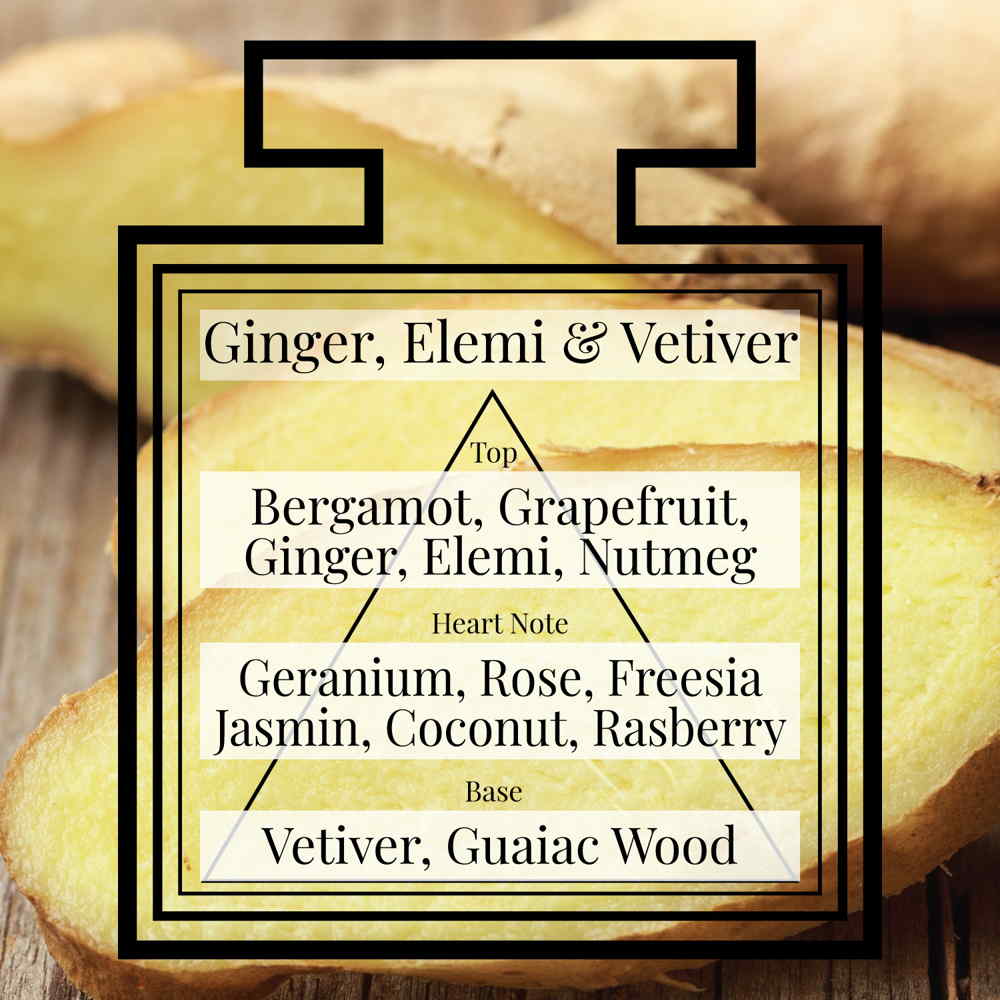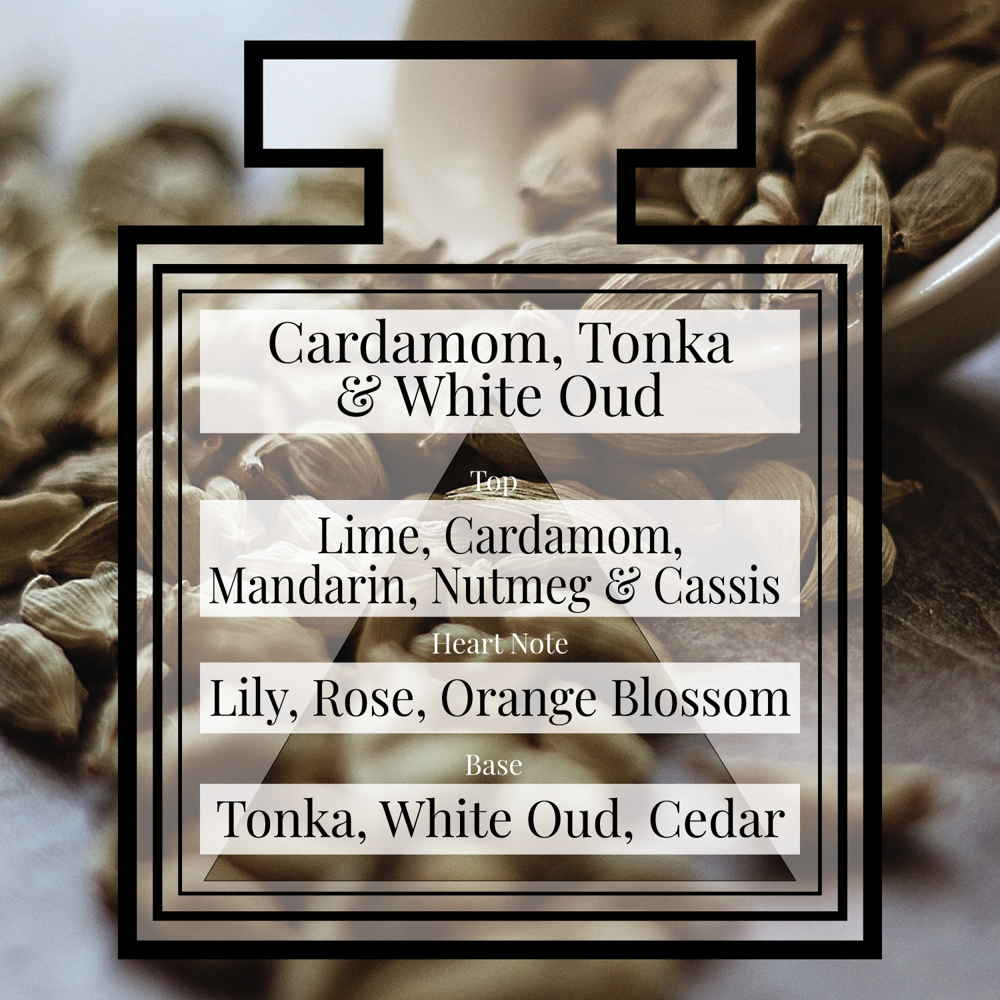Nutmeg in Perfumery: The Scent of Sophistication

Nutmeg, with its rich and warm fragrance, holds a special place in the world of perfumes. This aromatic spice, often used in cooking and baking, brings an exotic allure to many a fragrance composition. Its spicy, woody, and slightly sweet nuances add depth and complexity, taking your senses on a journey that blends comfort with a touch of adventure. Indeed, the multifaceted nutmeg scent is a true marvel in the world of fragrance.
Imagine the familiar embrace of nutmeg in your favourite holiday dishes, but now imagine that warmth bottled into a luxurious aroma that wraps you in its earthy aura. Nutmeg’s appeal in perfumery lies in its versatility, pairing seamlessly with a variety of other fragrance notes. As you explore the aromatic wonders of nutmeg, you’ll discover why this spice is a treasured component in perfume creation. Every aspect of nutmeg contributes to its unique character.
The Historical Appeal of Nutmeg
The story of nutmeg stretches back centuries, tracing its roots to the Banda Islands of Indonesia, also known as the Spice Islands, where the Myristica fragrans tree is native. Evidence suggests its use dates back as far as 3,500 years. Historically, these islands were the sole source of nutmeg and mace, making the spice incredibly valuable and a driving force in global trade. Arab traders successfully kept its origin a secret from Europeans for centuries, until the 13th century. The allure of nutmeg was simply irresistible.
The high value of nutmeg ignited intense competition among European powers. Around 1600, both the Portuguese and later the powerful Dutch East India Company fiercely sought to control the nutmeg trade, leading to significant conflicts and elaborate plots to maintain their lucrative monopoly. The British, in a strategic move to break Dutch dominance, eventually succeeded in transplanting nutmeg tree seedlings to other colonial holdings, particularly in the West Indies, ensuring the wider availability of this precious nutmeg seed.
Ancient civilisations, including the Egyptians and Romans, revered nutmeg not just for its culinary uses but also for its aromatic qualities. It was considered precious and was often used in ceremonial practices, with the Romans even utilising grated nutmeg as incense, to enhance rituals with its distinctive aroma. As the use of nutmeg spread, it found its way into perfumery, where alchemists began harnessing its evocative essence. This enduring fascination with nutmeg highlights its timeless appeal. The legacy of nutmeg continues in modern day perfumery, thanks to its ability to infuse warmth and richness into aromas.

The Aromatic Profile and Chemical Composition of Nutmeg
Beyond its general classification as a "spicy" note, nutmeg offers a nuanced and complex aromatic profile, making it truly unique in perfumery. It presents a multifaceted scent journey, typically opening with a warm, slightly piquant spice reminiscent of freshly grated nutmeg. This initial burst often transitions into a sweeter, almost creamy facet, which can sometimes have subtle hints of vanilla or even a delicate lactonic quality. The distinctive aroma of nutmeg is instantly recognisable and deeply comforting.
Underneath these dominant notes, there’s often an earthy and woody undertone, grounding the fragrance and preventing it from becoming overly sharp. Some varieties or extractions may also reveal subtle resinous or balsamic nuances, adding further depth. This intricate blend of warmth, sweetness, and earthiness allows nutmeg to harmonise beautifully with a wide spectrum of other perfume notes, from bright citruses to deep resins. The versatility of nutmeg as a warm spice is truly remarkable.
The distinctive aroma and properties of nutmeg are attributed to its complex chemical composition. The essential oil, which is colourless or light yellow, contains various volatile compounds. Principal components include pinene (such as D pinene), camphene, limonene, and importantly, myristicin. These compounds contribute to its characteristic flavour and fragrance. Additionally, nutmeg yields a fixed oil, often called nutmeg butter or nutmeg oil, which is primarily composed of trimyristin. Nutmeg extract is also sometimes derived, offering a concentrated flavour profile. These diverse compounds collectively define nutmeg’s rich aromatic signature.
Varieties and Types of Nutmeg in Perfumes
Nutmeg is more than just a single spice; it comes in several varieties, each with its own unique aromatic profile. The most common type is Myristica fragrans, the familiar nutmeg we know today, derived from its seed. Another variant, known as Bombay nutmeg, carries a less intense yet distinctive aroma that can subtly enhance a fragrance composition. In fact, dried nutmegs themselves can vary subtly in scent, influencing the final aroma.
In perfumes, these varieties of nutmeg contribute different elements to the overall bouquet:
- Myristica Fragrans: Offers a warm, spicy, and slightly sweet aroma. It pairs well with oriental and exotic fragrances, lending them a rich base note. This is the most widely used variety due to its rich and well rounded scent, derived from the nutmeg seed.
- Bombay Nutmeg: Has a milder profile, suitable for lighter and more delicate perfumes. Its subtlety is perfect for adding a soft touch without overwhelming lighter compositions, making it ideal for more understated or airy blends.
Each type of nutmeg blends beautifully with other perfume notes, creating harmonious combinations. Whether coupled with florals for a romantic twist or with woods to evoke earthy elegance, nutmeg enhances and balances a fragrance’s character. This versatility is why nutmeg continues to captivate both perfumers and their audiences alike, making it a truly indispensable spice.

Extraction Methods: Capturing Nutmeg’s Essence
Extracting the rich aroma of nutmeg involves various methods, each with its advantages and nuances.
The most traditional approach is steam distillation. This method involves heating the ground nutmeg with water, causing the aromatic compounds to evaporate. The vapours then condense into oil and water, allowing for the collection of pure nutmeg oil. This technique effectively captures the spice’s warm and spicy aroma, making it beloved in perfumery.
Another technique is CO2 extraction. This modern method uses carbon dioxide under high pressure to extract the essential oils. While more costly, it maintains more of the nutmeg’s natural properties, offering a truer essence. The resulting nutmeg oil is highly prized for its complexity and robustness in aromas. This extraction ensures a rich flavour profile is captured.
Perfumery also occasionally employs nutmeg extract or nutmeg absolute, though less commonly than the essential oil. An absolute is typically produced through solvent extraction, yielding a more concentrated and often richer aromatic material compared to steam distillation, capturing some of the more delicate, non volatile compounds from the nutmeg seed.
Each extraction method has a unique way of drawing out the best from nutmeg, and perfumers choose based on the desired depth and character of the final fragrance. The careful extraction process is crucial for the quality of the nutmeg aroma.
Culinary Uses of Nutmeg
Beyond its prominent role in perfumery, nutmeg is an iconic spice in global culinary traditions, prized for its distinctive flavour. The nutmeg fruit itself contains the valuable seed from which this versatile spice is derived. In cooking, it is an indispensable ingredient in diverse culinary applications, from sweet baked goods to comforting savoury dishes.
In the realm of sweet treats, nutmeg is a staple in many recipes. It lends its signature flavour to cakes, pies, and puddings, including classic rice pudding. It is the quintessential spice in pumpkin pie and a key component in warming drinks like eggnog and mulled cider, where its aroma truly shines. The presence of nutmeg elevates these dishes.
For savoury dishes, nutmeg offers surprising versatility. It adds depth to creamy sauces, such as the traditional French béchamel sauce, and can be found in various soup and pasta sauce recipes. In Indian cuisine, nutmeg is a cherished ingredient, often featuring in complex spice blends like garam masala and general curry powder. It can also appear as a pickling spice. Its ability to blend harmoniously with other spices like cinnamon and star anise makes nutmeg a favourite amongst chefs. Even Penang cuisine features the unique flavour of the nutmeg fruit. No matter the recipe, nutmeg adds a special touch.

Nutmeg as a Fragrance Note: Blending and Function
Nutmeg’s role in perfume compositions extends beyond simply adding a pleasant aroma; it acts as a crucial bridge and enhancer for other notes. Typically found in the heart or base notes of a fragrance, its warm and spicy character helps to ground lighter, more volatile top notes and provide a smooth transition into the deeper, more lasting base notes. The distinctive flavour profile of nutmeg also translates well into its aromatic applications, providing a rich aroma.
Nutmeg excels at blending with a wide array of fragrance families. In oriental compositions, this warm spice harmonises beautifully with vanilla, amber, frankincense, and myrrh, amplifying their warmth and adding a sophisticated spice. When paired with woody notes like sandalwood, cedarwood, or oud, nutmeg introduces a comforting earthiness and subtle sweetness that enriches the overall woody accord.
It also works surprisingly well with certain floral notes, particularly those with a richer character like rose or jasmine, adding an unexpected depth and complexity that elevates the floral bouquet beyond the purely sweet or fresh. In fougère or chypre fragrances, nutmeg can contribute a dry, aromatic spiciness, complementing notes of lavender, coumarin, and oakmoss. Its versatility allows it to lend a cosy, inviting quality or a subtle, intriguing edge, depending on the other ingredients it is paired with. The deep aroma of nutmeg is always a welcome addition.
Iconic Fragrances Featuring Nutmeg
Nutmeg has found a starring role in some of the most iconic and beloved fragrances. Here are a few examples that demonstrate its versatility:
- Jo Malone London – Nutmeg & Ginger (1990): A pioneering scent that blends warm nutmeg with fresh ginger, introducing the world to a new kind of spicy minimalism. This fragrance paved the way for modern spicy gourmands.
- Yves Saint Laurent – Opium (1977): A landmark oriental fragrance where nutmeg enriches a heady blend of myrrh, clove, and florals. The spice contributes to its intoxicating signature.
- Tom Ford – Noir Extreme: Nutmeg is combined with cardamom and saffron, creating a sensual, gourmand-spicy heart that is both luxurious and exotic.
- Amouage – Epic Woman: In this deeply complex perfume, nutmeg pairs with incense and oud, reinforcing the brand’s reputation for opulence and narrative-driven scents.

Broader Uses and Considerations of Nutmeg
Beyond its prominent role in perfumery and the kitchen, nutmeg has been historically and continues to be utilised across various industries. As a food flavouring, it is indispensable in diverse culinary applications, from baked goods and puddings to savoury dishes. The unique aroma of nutmeg is unmistakable.
In the pharmaceutical sector, the essential oil is incorporated into products such as toothpaste and cough syrups. Historically, an ointment derived from nutmeg butter was even used as a counterirritant and in the treatment of rheumatism.
However, it is important to note that while nutmeg is a beloved spice, consuming it in large quantities can have significant psychoactive effects due to compounds like myristicin. In excessive doses, nutmeg ingestion can lead to nutmeg intoxication, potentially causing hallucinations, convulsions, palpitations, and pain. While nutmeg poisoning is rarely fatal, awareness of its potent properties is essential, especially in contexts beyond its typical culinary or aromatic uses. The nutmeg seed contains these compounds. Despite these considerations, its proper use in cooking and perfumery is safe and cherished. This versatile nut should always be used thoughtfully.
Nutmeg Fragrances with Pairfum London
Cardamom, Tonka & White Oud – Eau de Parfum by Pairfum London
This rich, passionate fragrance opens with Lime & Mandarin, Cardamom, Nutmeg, Clove and fruity hints of Cassis. At the heart of this accord are spicy White Lily, Rose and Orange Blossom. A sensual base of Tonka, White Oud, Cedar, Santal and Amber rounds off this creation.
Ginger, Elemi & Vetiver – Eau de Parfum by Pairfum London
A surprising fusion of spices and freshness, it opens with notes of Bergamot, Grapefruit and a trace of Lavender, combined with Ginger, Elemi, Nutmeg & Cinnamon. The heart is composed of Geranium, Rose, Freesia, Gardenia, Jasmine and Orange Blossom, with fruity hints of Coconut and Raspberry. A base of Vetiver, Guaiacwood, Cedar, Amber, Cashmere Musks, Vanilla & Moss supports this note beautifully.

Elevate Your Collection with Nutmeg’s Warm Aromas
Nutmeg continues to captivate with its warm and inviting essence. Its history, versatility, and unique character ensure that it remains a staple in fine fragrance creation. Whether you’re seeking spicy warmth or a rich depth that transforms a simple aroma into something unforgettable, nutmeg offers a fascinating blend of possibilities. This exceptional spice truly stands apart.
As you explore the aromatic world of nutmeg further, consider how this spice’s enduring appeal can transform your fragrance collection. Its presence in iconic perfumes is a testament to its timeless allure and ability to adapt to modern tastes while holding onto a rich history. Embracing its essence can open doors to new and exciting fragrant experiences. The nutmeg fruit and its precious seed provide a world of aromatic wonder.
Let the timeless allure of nutmeg guide you in creating a truly unforgettable fragrance journey. Discover the essence of nutmeg and its potential to transform your perfume collection. The unique aroma of nutmeg is a testament to nature's artistry.
https://www.pairfum.com/nutmeg-in-perfumery/?fsp_sid=4736
#ARTISANPERFUMERSOFLONDON #FRAGRANCE #FRAGRANCECOLLECTION #INSTAPERFUME #LONDON #LOVE #NATURAL #NATURALFRAGRANCE #NICHE #NUTMEG #NUTMEGPERFUME #NUTMEGSCENT #PERFUME #PERFUMELOVERS
Comments
Post a Comment